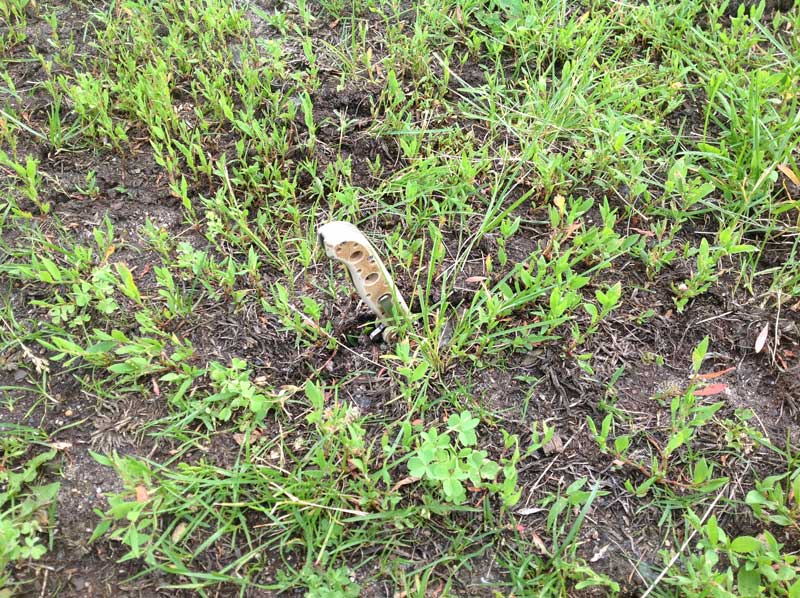By Sam Bauer
For over a month now I’ve been receiving questions that go something like this, “I know I missed the best time for seeding my lawn which is mid-August to mid-September. Can I still seed even though it’s October and temperatures have been mild?” My response is always the same, “Just wait, dormant seeding in November will be your best option.” It is very true that if temperatures are warm during the month of October, you could get some seed to establish prior to winter, but temperatures are unpredictable and could change drastically within a day.
Tired of your lawn looking like this every spring? Consider dormant seeding to improve your lawn quality this spring. Photo: Sam Bauer
So, what do/did you risk by seeding in October? Well nothing really, except the cost of seed. Chances are that a good majority of this seed will germinate prior to winter, and complete loss of seedlings is possible over the cold winter months. Because of this, your time and money are better spent waiting for the appropriate dormant seeding time which is generally mid- to end-November.
Dormant seeding can be conducted with any turfgrass species. This practice involves seeding when temperatures are too low for the seed to germinate prior to winter. Germination prior to winter is bad and seedlings will generally die if they haven’t matured. Sometimes it is a bit of a waiting game at this time of year. The trick is to find the time when soils are unfrozen so that seed can be worked in slightly, yet air temperatures must be cold enough so the seed won’t germinate. Wait for high daytime temperatures of 35-40 degrees before seeding. You still should be waiting at least two weeks to seed based on the long range forecast for the Twin Cities. Regions of northern Minnesota will be able to seed much sooner, possibly even next week.
Is there an advantage to dormant seeding versus spring seeding? Yes and no. A dormant seeded lawn could mature as much as one month faster in the spring than a spring seeded lawn. This is because some of the germination process actually starts prior to winter in a dormant seed situation, although the shoots still haven’t emerged from the seed. When temperatures are adequate in the spring, complete germination occurs. In this case the seed actually dictates when temperatures are warm enough to grow. Just like late-fall, temperatures and weather patterns can be unpredictable in the spring. For this reason, the best timing for spring seeding is difficult to predict, which can delay the timing to actually sow seed. Still, there some negative aspects of dormant seeding to consider. First, because of the spring temperature fluctuations, it is possible to have good seedling establishment initially, but a cold spell during this time will injure these seedlings. Also, there is a greater potential for seed loss over the winter due to erosion and water movement, predation, and decay. These positive and negative aspects should always be considered during this process.
Bob Mugaas wrote a fantastic article in the November 2009 issue of Yard and Garden News. Please visit this article by clicking the link for more detail on the dormant seeding process: Dormant Seeding Lawns
